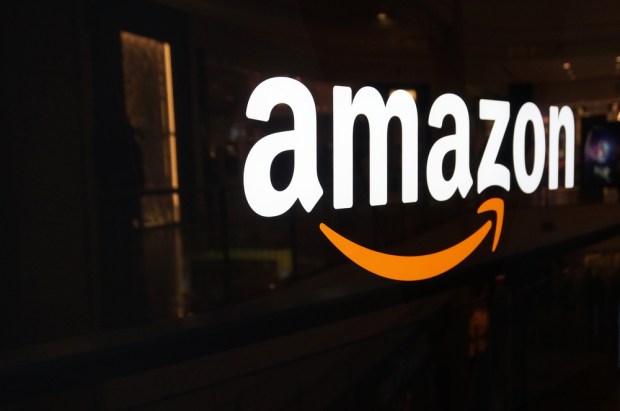Keeping ‘Groundhog Day’ Out Of Payments

Consumers hate to input the same data over and over and they want a technically and emotionally seamless payments experience, according to Amazon’s Matchmaker Patrick Gauthier, VP of the eCommerce giant’s external payments operations.
In payments “the moment of truth” comes not at the moment of the transaction – where money changes hands, in person or digitally, but at the very beginning of the dance between customer and retailer.
That’s one of the sentiments given forth by Patrick Gauthier, vice president of External Payments at Amazon, during the latest (Aug. 9) installment of PYMNTS’ “Matchmaker” series. This wide-ranging interview with Karen Webster touched on a variety of topics, including the transformation of Amazon itself, from consumer-focused retailer to matchmaker extraordinaire across the consumer/merchant/IT/logistics arenas, in an effort to uncover what frictions, past and present, have been and are being removed in an increasingly online (and universal) shopping experience.
“We’re such a broad company now,” Gauthier mused, “but there is a saying ascribed to Jeff Bezos in the early days of Amazon that WWW used to stand for ‘world wide wait.'” Gauthier remarked that in that simple statement it’s easy to describe what friction Amazon wanted to remove: to make things immediately available to customers and leveraging technology to shorten the distance between the time when someone wants something and when they get it.
Today, Gauthier said, that means shortening the distance between the consumer and the products that they are “buying in ever more connected ways” via a number of now connected devices. That has led Gauthier’s team to focus on what he characterizes as the biggest problem in payments: “groundhog buying,” after the movie “Groundhog Day” wherein the protagonist repeats the same day, the same actions and dialogue ad nauseum and ad infinitum.
In the payments space, such “groundhog buying” repetitiveness is tied to what Gauthier said are “instances where consumers have to redo something, and revise” and fill out multiple data sheets. He and his team are banking on the fact that the “trusted” and intuitive method of storing information with Amazon for checkout purposes off of Amazon with third-party merchants not only removes the technical glitches that may lead to a bumpy checkout experience but also removes “emotional friction as well.”
Gauthier emphasized that Amazon works from the customer and goes backward in determining which problems to address most immediately. Sometimes, he said, that means that what emerges can be counterintuitive. He used the example of encouraging other merchants to join its platform – a move to embrace competitors that of course spawned an ecosystem that now sports hundreds of millions of consumers served by millions of merchants and drives nearly half of its volume.
Similarly, branding out into logistics has yielded new relationships that may at first have seemed a stretch beyond the original reach of the company, scaling down from two days’ shipping to single day shipping, to one hour arrivals.
“The mental model has not changed,” said Gauthier, simply “the means to do it have evolved and have become more sophisticated.” Thus the emergence of Amazon payments options on third-party sites such as All Saints, Moda Operandi and GoGo. Merchants of all stripes, sizes and serving all manner of verticals want to connect with Amazon’s audience of 300 million consumers “and merchants cannot afford not to do that,” said Gauthier.
Gauthier also emphasized the approach that Amazon is taking with those third-party sites and merchant relationships. Rather than place the Pay with Amazon logo on the checkout page, consumers are asked to “Log in With Amazon” that then allows them to bypass typing in their user name and password. “Check-in is the new Checkout,” Gauthier says. It removes friction from the customer and provides merchants with valuable information that they never before had.
Gauthier noted that in the past physical retailers had no knowledge of “how many people entered the store, who bought, which aisle they had gone in, and Amazon’s Check-in as the new Checkout” gives merchants information on who walks in the door (or portal) the moment it happens, helping merchants streamline inventory.
Touching on Alexa, Gauthier noted that the innovation on voice-activated tech is still evolving, of course, and far supersedes touchscreen as the ultimate user interface. “It’s faster to say ‘Alexa, turn on the light’ than it is to get out a device, have a fingerprint scanned, unlock the device, flip a [virtual] switch” to turn on the light.
As the lines between eCommerce and physical commerce are blurred, the physical store experience can help improve online experience and vice versa, noted Webster. “In general you can observe different behaviors and what consumers value,” said Gauthier, using for example the Pay with Amazon feature at the Amazon bookstore in Seattle – “as long as you have your phone you really do not need anything else … we’re going to be doing a lot to digitize the physical store,” he said, in a nod to reinvention, “to make it more than just a dumb array of shelves.”
As for a matchmaker of his own choice to spotlight, Gauthier pointed to not a person or a company, but to a product: Kindle. The device, he said, has transformed the act of reading for him (and several family members) personally and the dissemination of information in general. The device has also given rise to, and aided the development of, self-publishing, which in turn has alerted him and others to authors and subjects that may otherwise have been overlooked.
